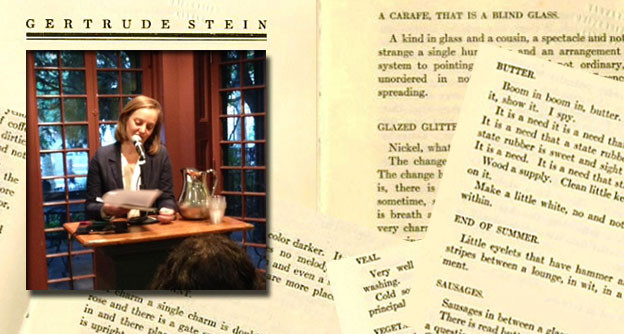After Stein's closet
A tender reading from 'Tender Buttons'

I read “A Substance in a Cushion” as a sexy, humorous love poem that plays on a little calamity and a little calm in the closet. Its sweetness and its resolution are very likely embodied in the same hand that does the sewing.
Let’s start at the beginning. The title of the poem gestures inward with the preposition “in”: the substance is “in” a cushion, not “on” or “under,” and not “of” for that matter. There is no top and bottom to this substance. Is it unbounded? Is it uniform? Is it limitless? Does it belong to the cushion?
What exactly is a substance in a cushion? I imagine it is soft: it is not hard or callous; it is not covering or worn. Substantial. It is the essential material of the cushion, and it is what lies beneath everything seen and touched. But is it unseen? Is it untouched? Is it different from what is seen or touched? The callous, the hard covering of skin, is also skin; the cover, the soft covering of cushion fabric, is also fabric. The interior is on a continuum with the exterior, every tenderness points outward. Every substance in a cushion manifests the exterior as well, although is appears as a difference. Every inner feeling is outwardly touched and tender. Even buttons are tender. Every tender substance and every tender presence is vulnerable and cared for.
The prepositions in this poem are an obsession with “in” and “under” — what is hidden. They point away. The nouns, on the other hand, point to what might be seen.
Stein’s language evokes sex. “What is the use of a violent kind of delightfulness if there is no pleasure in not getting tired of it?” This is sweet as well. There is a little “groan grinding” and “singing trimming a red thing.” Does all this take place in the closet?
“A closet, a closet does not connect under the bed.” How does this image work? What does the verb “connect” do with its “to”? And why is the closet under the bed? Why not in the bed, behind the bed, on the bed … is it a substance of the bed? Is the closet a substance of the bed?
The theme of the bed is “the closet,” but the closet is substantive. It is shaded, it is empty, it appears as a dash not quite connecting. It is named in the negative (not connecting) compelling an affirmation (could it connect if it were not under?). It is a possibility but not the least bit of action. Another negation appears in the sentence, “What is the use of a violent kind of delightfulness if there is no pleasure in not getting tired of it.” There is no other way to say this!
One more question: Why “girls and men” in equal numbers? Why not women and men? Why not boys and women? Why are girls in this perpetual tenderness, “not even more hurt than that”?